12 Different Types of Mozzarella: From Creamy to Crisp

Mozzarella is a traditionally southern Italian cheese made from Italian buffalo’s milk by the pasta filata method. However, it can also be made from cow’s milk.
Here are 12 different types of mozzarella that you might come across:
| Type of Mozzarella | Description |
|---|---|
| Mozzarella di Bufala | Classic Italian mozzarella made from buffalo milk. It has a rich and creamy flavor. |
| Fior di Latte | Variation of mozzarella made from cow’s milk. It’s a bit less creamy but still delicious. |
| Burrata | A fresh Italian cheese that has an outer shell of mozzarella that encases a heart of stracciatella (shredded mozzarella) and cream. |
| Bocconcini | These are small mozzarella cheeses about the size of an egg. They’re often used in salads. |
| Ciliegine | Even smaller than bocconcini, these cherry-sized mozzarella balls are perfect for appetizers. |
| Mozzarella en Carrozza | This isn’t a type of mozzarella itself, but a popular Italian dish using mozzarella cheese, which is breaded and fried. |
| Mozzarella Sticks | These are a popular snack in America, where sticks of mozzarella are breaded and deep-fried. |
| Provolone-Mozzarella | This is a semi-hard cheese that combines the stretchiness of mozzarella with the savory flavor of provolone. |
| Smoked Mozzarella | Also known as “Mozzarella Affumicata,” this mozzarella variation is smoked to give it a unique, robust flavor. |
| Low Moisture Mozzarella | This type of mozzarella has been dried out for a longer shelf life and is often used in cooking because it has a lower water content. |
| Mozzarella Fresca | This is a fresh, soft cheese with a creamy texture and mild flavor. It’s typically eaten the day it’s made. |
| String Cheese | This fun-to-eat cheese is a type of low-moisture mozzarella that can be peeled apart into strings. |
What is the Best Type of Mozzarella?
The “best” type of mozzarella can vary depending on personal preference and the specific use you have in mind.
For a rich, creamy, and authentic Italian flavor, many people prefer Mozzarella di Bufala. Made from water buffalo milk, this mozzarella has a distinct taste and texture that’s highly valued.
If you’re looking for a cheese that melts well and gives that beautiful cheese-pull effect, Low Moisture Mozzarella is often the top choice. It’s commonly used on pizzas and in baked dishes.
For a fresh salad or appetizer, Burrata or Bocconcini could be considered the best. Burrata has an outer shell of mozzarella that encases a heart of stracciatella (shredded mozzarella) and cream, offering a burst of flavor and creaminess.
Bocconcini are small, mild-flavored mozzarella balls that are excellent in salads or served with tomatoes and basil.
Ultimately, the best type of mozzarella is the one that suits your taste buds and culinary needs the most!
The 12 Different Types of Mozzarella: An In-Depth Review
1. Mozzarella di Bufala:
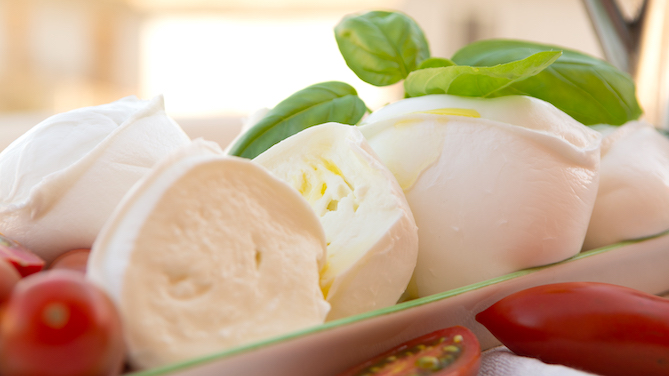
Originating from Southern Italy, Mozzarella di Bufala is made from the milk of water buffalos.
It’s cherished for its rich and creamy flavor profile that surpasses that of mozzarellas made from cow’s milk. This cheese is a delicacy in salads or enjoyed on its own with a drizzle of olive oil.
2. Fior di Latte:

Translating to “flower of the milk,” Fior di Latte is a variation of mozzarella made from fresh cow’s milk.
It has a slightly less creamy texture compared to buffalo mozzarella but is still delightfully soft and milky, making it a versatile choice in many dishes.
3. Burrata:
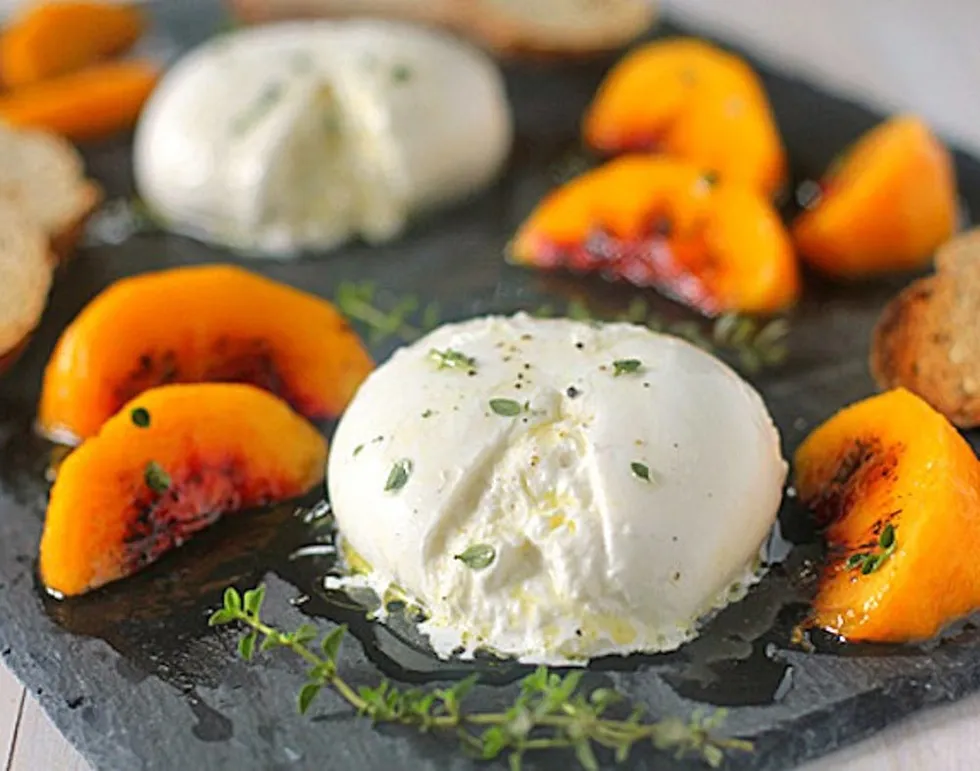
A showstopper in the world of cheese, Burrata begins as Mozzarella but then takes an indulgent turn. The outer shell is solid mozzarella while the inside contains both mozzarella and cream, giving it an oozy, creamy texture that pairs perfectly with crusty bread or fresh tomatoes.
4. Bocconcini:

These small, egg-sized mozzarella balls are delightful additions to any salad or antipasto platter.
Bocconcini have a springy texture and mild flavor, ready to soak up the flavors of accompanying ingredients.
5. Ciliegine:
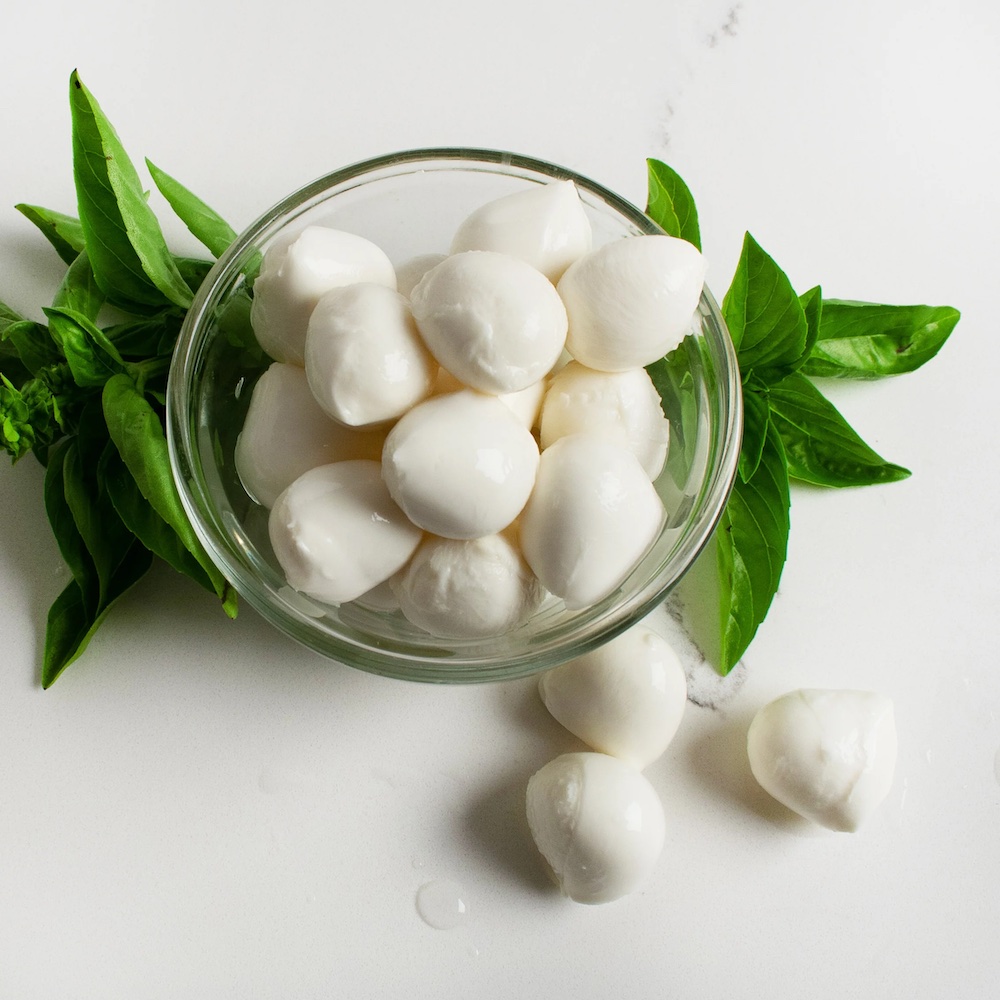
Even smaller than Bocconcini, Ciliegine are cherry-sized balls of mozzarella. Their bite-sized nature makes them a favorite for appetizers, skewers, or for popping straight into your mouth!
6. Mozzarella en Carrozza:
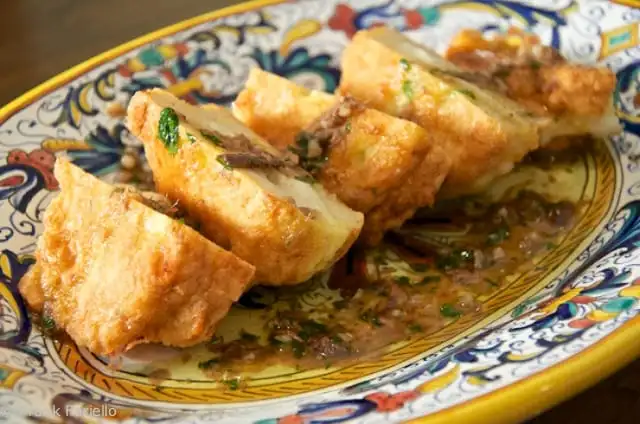
Not a type of mozzarella, but a delightful dish using it. Literally translating to “mozzarella in a carriage,” this Italian snack involves breaded and fried mozzarella, creating a deliciously melty interior with a crispy exterior.
7. Mozzarella Sticks:
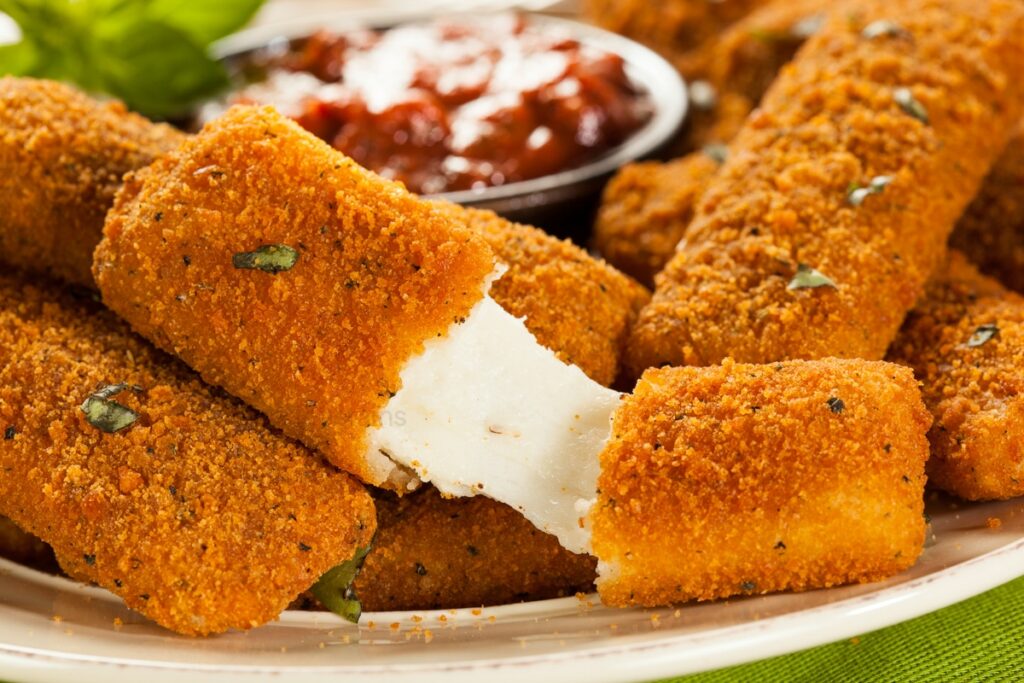
A beloved snack across America, Mozzarella sticks are breaded and deep-fried to golden perfection.
They’re known for their stringy, melted cheese pull and are often enjoyed with marinara sauce for dipping.
8. Provolone-Mozzarella:
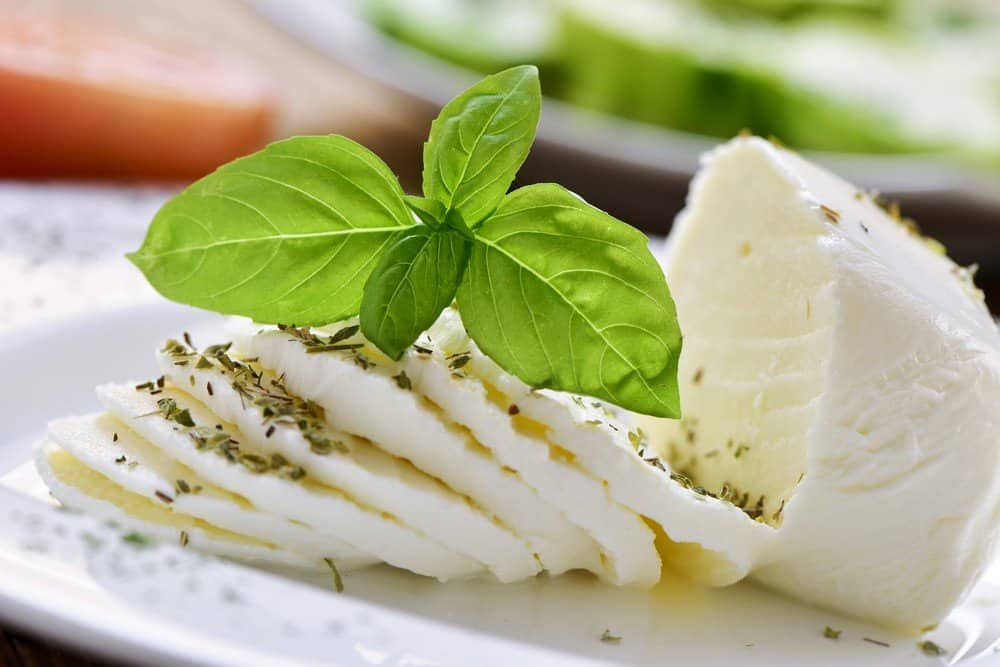
This semi-hard cheese marries the stretchy texture of mozzarella with the fuller, savory flavor of provolone. It’s a fantastic melting cheese, ideal for sandwiches or pizza.
9. Smoked Mozzarella:
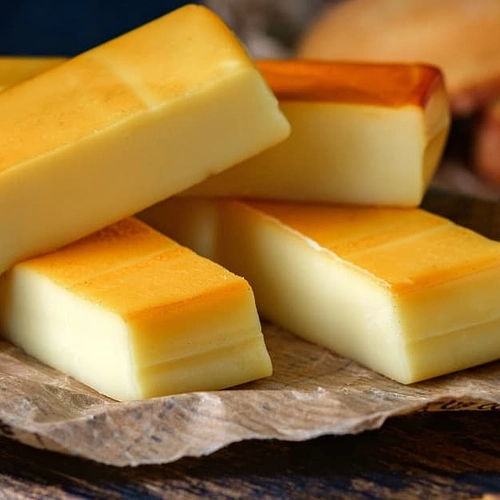
Known as “Mozzarella Affumicata” in Italy, this mozzarella variation is smoked to give it a unique, robust flavor. It’s an intriguing addition to any cheeseboard and pairs well with fruits and honey.
10. Low Moisture Mozzarella:
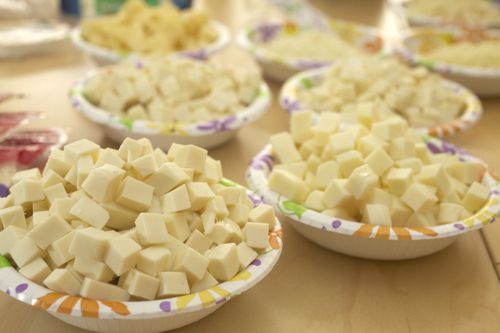
Having been dried out for a longer shelf life, this mozzarella variant is a staple in cooking, particularly for pizza, due to its lower water content and excellent melting qualities.
11. Mozzarella Fresca:
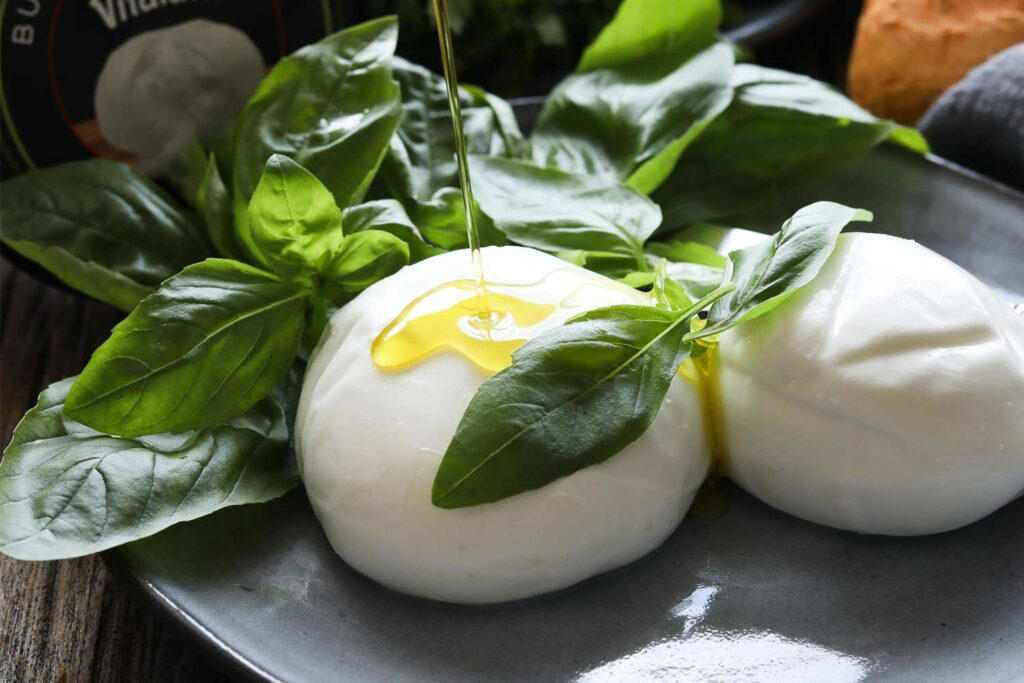
This is a fresh, soft cheese with a creamy texture and mild flavor. Mozzarella Fresca is typically eaten the day it’s made and is a refreshing addition to salads and pasta dishes.
12. String Cheese:

A fun-to-eat cheese that’s loved by kids and adults alike, String Cheese is a type of low-moisture mozzarella that can be peeled apart into strings.
It’s a great snack on-the-go and packs a good dose of protein and calcium.
How Can You Tell if Mozzarella is Good Quality?
Determining the quality of mozzarella involves a combination of visual inspection, touch, smell, and taste.
- Appearance: A good mozzarella should look appetizing whether you grate it, slice it, or melt it. Its surface should be smooth and the cheese itself should be white in color. Any discoloration could indicate that the cheese is no longer fresh.
- Texture: High-quality mozzarella should be compact and elastic, but not rubbery. When you press or slice the cheese, it should exhibit a certain level of porosity, indicating that it has been properly drained and kneaded during production.
- Smell: Fresh mozzarella has a light, mild aroma. If the cheese smells off or overly strong, it may be spoiled.
- Taste: Quality mozzarella should have a fresh and slightly tangy flavor with a hint of sweetness.
- Packaging and Expiration Date: Check the packaging for any signs of bloating, which could indicate the cheese is past its prime. Also, always check the expiration date. While mozzarella can technically last 2-3 weeks, its quality diminishes as it approaches the end of this expiration date.
- Elasticity and Meltability: The best mozzarella cheeses have superior elasticity and meltability, creating that characteristic ooey-gooey, stretchy, melty experience when heated.
Remember, the fresher the mozzarella, the better it is. Once opened, it should be eaten within 3 days to a week for the most favorable taste.
Which Mozzarella is Best for Cooking & Melting?
When it comes to cooking, the type of mozzarella you choose can greatly influence the texture and flavor of your dish.
For most recipes that require melting, such as pizza or lasagna, low moisture mozzarella is often the best choice. Low moisture cheese has been aged longer, reducing its moisture content, which allows it to melt beautifully without releasing too much water into your dish.
It also has a slightly firmer texture and a mild yet flavorful taste that complements a variety of ingredients.
Which Mozzarella is Best for Salad?
However, for dishes where a creamier texture is desired, such as caprese salad or certain pasta dishes, fresh mozzarella like Mozzarella di Bufala or Fior di Latte would be ideal.
These types of mozzarella have a softer texture and a rich, milky flavor that can elevate the taste of your dish.
How Long Does Mozzarella Last in Fridge?
The shelf life of mozzarella cheese in the fridge can vary depending on whether it’s fresh, shredded, opened, or unopened.
According to sources like Can It Go Bad, Does It Go Bad, and Eat Delights, an unopened package of mozzarella cheese can last beyond its “use-by” date for about 5-7 days if properly stored in the refrigerator.
Once opened, it should be consumed within 1-2 weeks. However, fresh mozzarella has a shorter lifespan and is typically best consumed within 3 days to a week after opening.
Shredded mozzarella, can last up to two weeks in the fridge if unopened, but its shelf life may decrease once the package is opened.
To maximize the shelf life, store the cheese in an airtight container or wrap it well in plastic wrap to prevent exposure to air.
What Type of Mozzarella is the Healthiest?
The healthiest type of mozzarella cheese largely depends on your specific dietary needs and preferences. However, according to multiple sources, including Healthline, Eating Well, and Medical News Today, mozzarella is often ranked as one of the healthiest types of cheese.
This is primarily because mozzarella has a higher moisture content and less total fat compared to many other cheeses, and it also has lower amounts of saturated fat.
Fresh mozzarella, in particular, is highlighted by The Washington Post as being low in calories and sodium.
Furthermore, it contains Lactobacillus, a beneficial type of bacteria that promotes gut health. All these factors combined make mozzarella a healthy choice for a variety of diets.
However, it’s always important to consume cheese in moderation due to its high sodium and fat content.
If you have specific dietary restrictions or health concerns, it’s best to consult with a healthcare professional or a registered dietitian.





